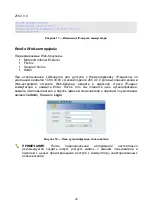
Management Options
This switch provides multiple access platforms that can be used to configure, manage, and
monitor networking features available on this switch. Currently there are three
management platforms available which are described below.
Command Line Interface (CLI)
This switch can be managed, out-of-band, by using the console port or the MGMT port.
Alternatively, the switch can also be managed, in-band, by using a Telnet connection to
any of the LAN ports on the switch.
SNMP-based Management
The switch can be managed with an SNMP-compatible console program. The switch
supports SNMPv1, SNMPv2c and SNMPv3.
Web User Interface (Web UI)
The Web UI, a graphical representation, provides access to most of the software features
available on the switch. These features can be enabled, configured, disabled, or monitored
using any standard Web browser, like Microsoft’s Internet Explorer, Mozilla Firefox, Google
Chrome, or Safari. The MGMT port offers an Out-Of-Band (OOB) connection to the Web
UI and the LAN ports offers an in-band connection to the Web UI using HTTP or HTTPS
(SSL).
Connecting to the Console Port
The console port is used to connect to the CLI of the switch.
To use the RJ-45 console port, the following equipment is needed:
A terminal or a computer with both an RS-232 serial port and terminal emulation
software
A console cable with a male DB9 connector on one end and an RJ-45 connection
on the other
To connect the RJ-45 console port on the switch to the computer:
Connect the male DB9 connector on the console cable (shipped with the switch) to
the RS-232 serial port on the computer running terminal emulation software then
insert the RJ-45 connector into the RJ-45 console port on the switch.
To configure the terminal emulation software as follows:
Select the appropriate serial port (COM1 or COM2).
Set the data rate to 115200 baud.
Set the data format to 8 data bits, 1 stop bit, and no parity.
Set flow control to none.
11












































